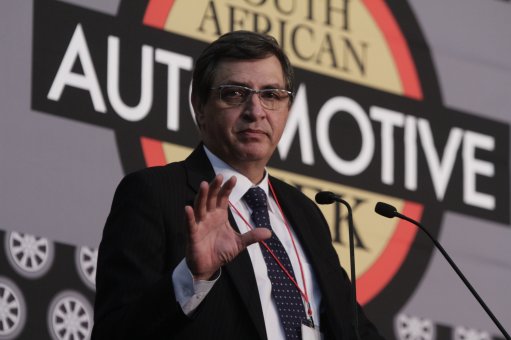
Johan van Zyl
Photo by: Duane Daws
The only real competitive advantage the local automotive industry has over international competitors is the availability of natural resources in the country, says National Association of Automobile Manufacturers of South Africa president and Toyota South Africa Motors CEO Dr Johan van Zyl.
“We have to ask ourselves, why would anyone want to come here to produce cars? What makes us better?”
Van Zyl says there are several steps in the automotive assembly chain where South Africa has proved uncompetitive, with the country having, for example, the highest labour costs among the Brics countries – Brazil, Russia, India, China and South Africa.
“That space is taken. Where will we find our competitive advantage?”
While South Africa’s auto industry does have several strengths, the country’s natural advantage also does not lie in the design and development of new vehicles, believes Van Zyl, and neither so in manufacturing, logistics, the selling of vehicles, or in providing aftersales service.
South Africa’s competitive advantage lies in its natural resources.
“The beneficiation of our mineral resources is key.”
South Africa uses its lead resources optimally in the production of car batteries, for example. However, it does not use iron-ore, locally produced resin, or copper – from South Africa or Zambia – in the same manner.
Van Zyl says the steel used in a locally produced vehicle amounts to around 830 kg on average, with another 235 kg of aluminium, 28 kg of copper and 68 kg of resin used.
The current local content on vehicles produced in South Africa is around 40%, or 290 kg of steel, 96 kg of aluminium, 16 kg of copper and 3 kg of resin, with the rest imported.
Should imports be reduced by 10%, an additional 103 000 t of resources a year will be beneficiated in South Africa, saving the country R2.5-billion a year, says Van Zyl.
However, in order to achieve this, it is necessary to sell and build more cars locally, and to invest in, and develop the skills and technology base needed to increase the local parts content of vehicles build in South Africa.
Van Zyl also questions why South African manufacturers should pay dollar-based prices for commodities, such as steel, produced at a rand cost base.
Also, with South Africa having 80% of the world’s platinum reserves, why “do we only have 15% of the world’s catalytic converter market, and not 40%?”
Van Zyl adds that the automotive industry in South Africa “cannot create jobs. Economic activity create jobs”.
He notes that the manufacturing industry in South Africa is declining, with the motor industry now contributing 30% to domestic manufacturing, which he regards as “scary”.